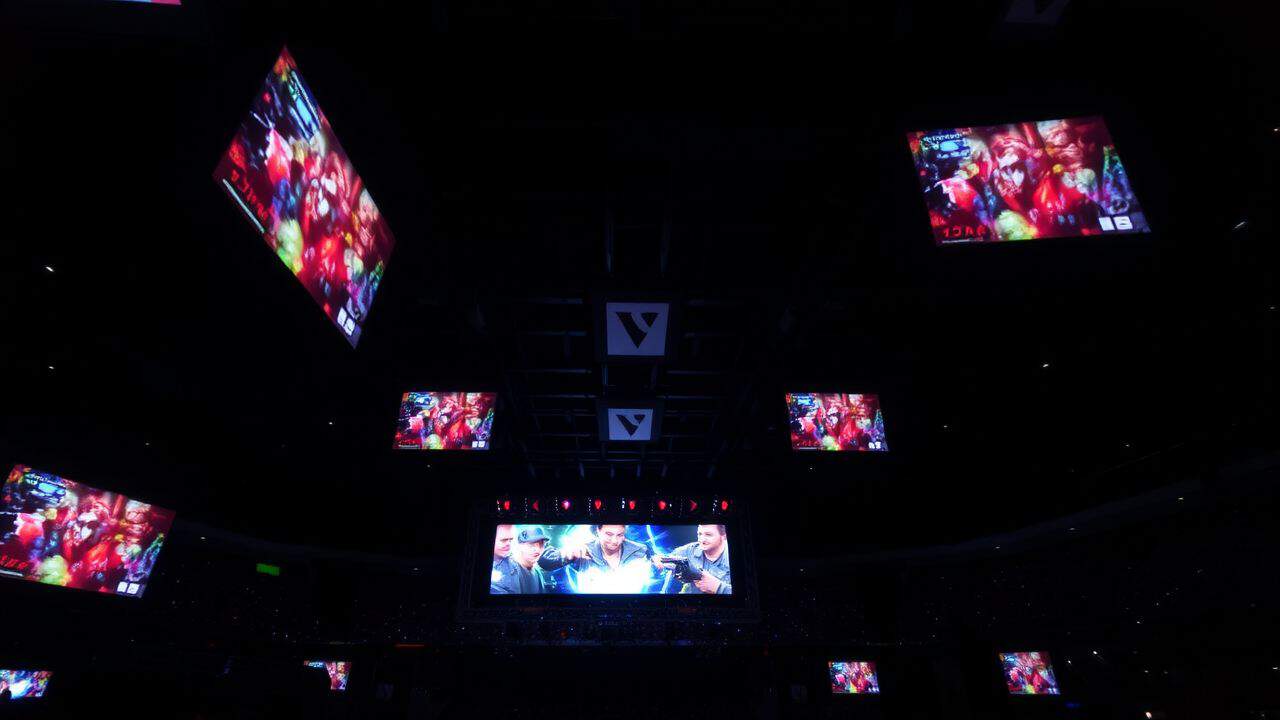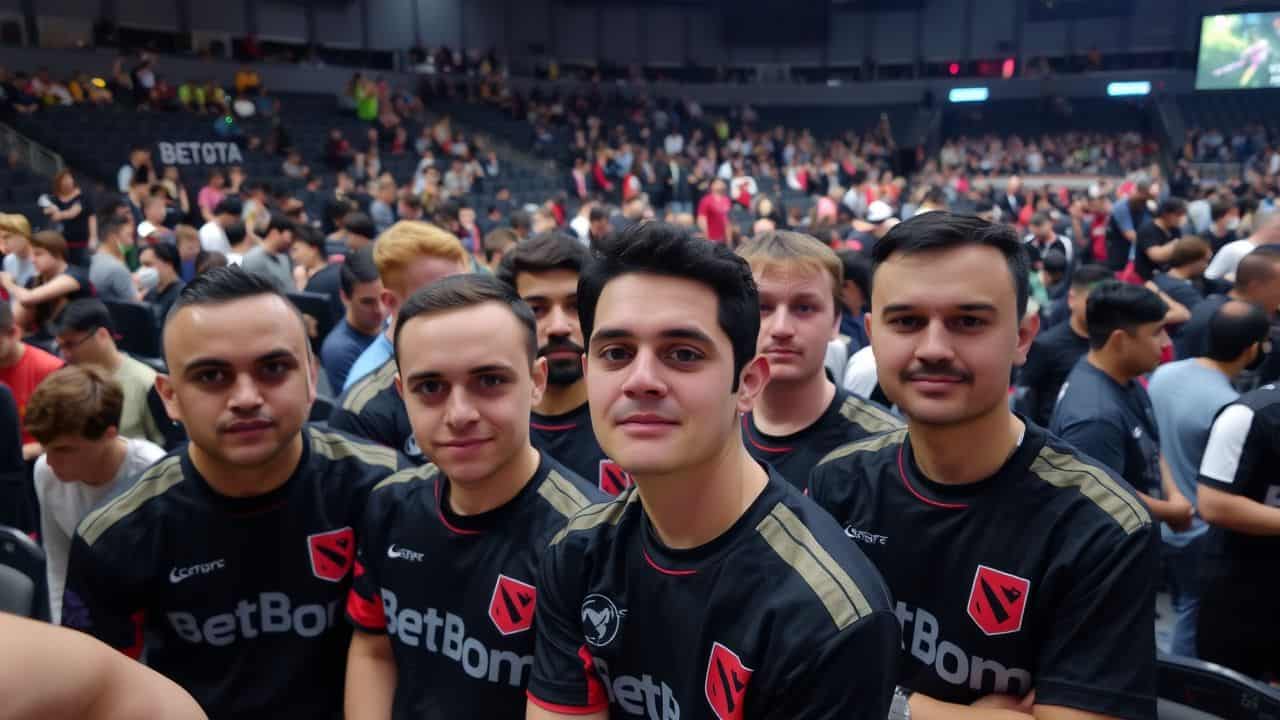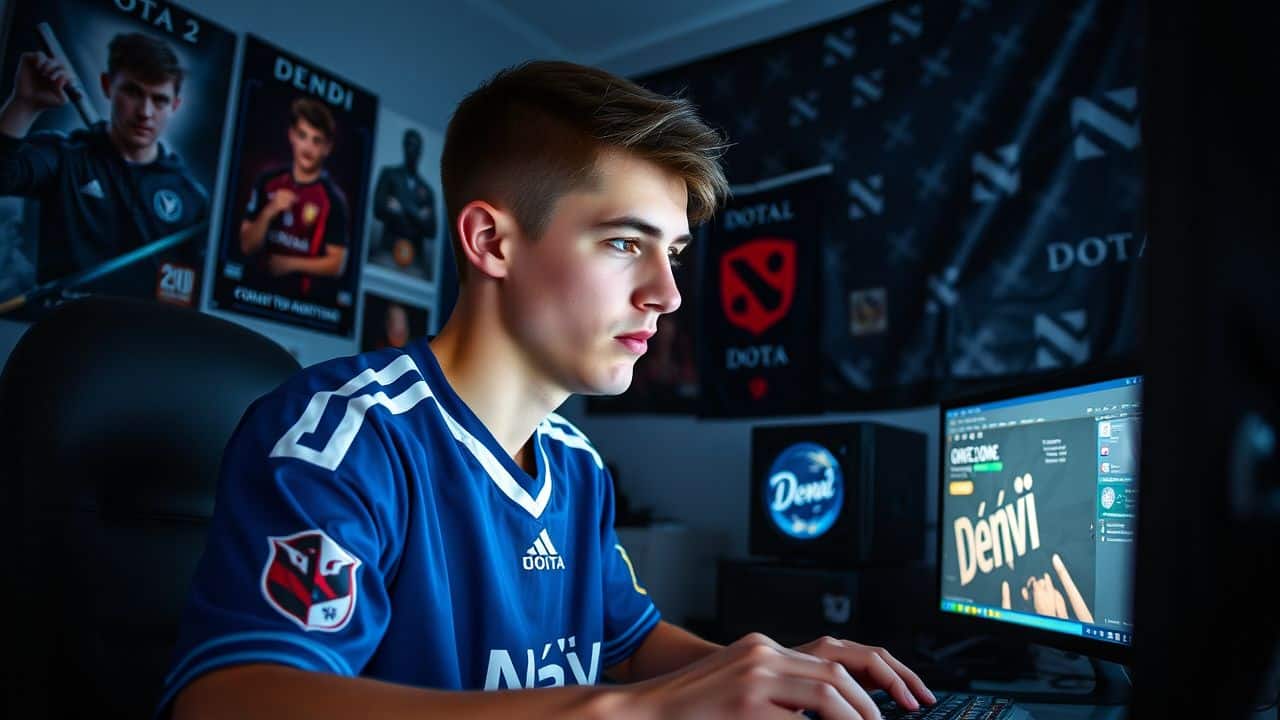Many fans struggle to track the fast-paced growth of Dota 2 esports and its million-dollar tournaments. The competitive scene has grown from small online matches to filling huge arenas, with prize pools now reaching over $40 million.
This guide breaks down the major tournaments, star players, and game-changing updates that shaped professional Dota 2. Get ready for an exciting journey through the biggest moments in competitive gaming history.
Key Takeaways
Dota 2’s competitive scene grew from small LAN events to major tournaments with prize pools reaching $40 million, starting with The International’s $1.6 million pool in 2011.
ESL One and BLAST Premier events have become key tournaments alongside The International, with ESL One Bangkok 2024 offering $300,000 in prizes and BLAST Slam 2024 featuring a $1 million prize pool.
Legendary players like Puppey, Dendi, N0tail, and ana have shaped competitive Dota 2 through achievements like multiple TI wins and innovative gameplay strategies, helping establish professional gaming as a legitimate career.
Game-changing updates like Patch 7.36’s Aspects and Innate Abilities force teams to constantly adapt their strategies, while the addition of new heroes like Ringmaster in 2024 keeps the competitive scene dynamic.
Teams now rely heavily on data analytics, specialized coaches, and extended bootcamps to stay competitive, with practice schedules expanding from two to three weeks before major events.
Table of Contents
The Rise of Dota 2 Esports
Dota 2’s competitive scene exploded in 2011 when Valve hosted the first International with a $1.6 million prize pool. Team Spirit and Na’Vi led the charge in transforming casual gaming matches into high-stakes battles that drew millions of viewers on social media platforms.
Early competitive scene

The competitive roots of Dota stretch back to 2005, sparking fierce battles between teams like Na’Vi and Natus Vincere. Players gathered in small LAN cafés across Southeast Asia, marking the start of what would become a global phenomenon.
Teams faced off in best-of-three matches, laying the groundwork for modern Dota 2 bets and tournament structures.
Back in those early days, I watched teams compete for modest prize pools in regional qualifiers. The scene took a massive leap in 2011 with The International’s $1.6 million prize pool, setting new standards for esports tournaments.
Local competitions used simple brackets instead of today’s complex double-elimination format. Teams like Team Spirit and Nigma Galaxy emerged from these grassroots beginnings, proving their skills in packed venues like Royal Paragon Hall.
Valve’s role in shaping the esports ecosystem
 Valve Corporation turned Dota 2 into a powerhouse of competitive gaming. Back in 2011, they kicked things off with a bang by hosting The International, which packed a whopping $1.6 million prize pool.
Valve Corporation turned Dota 2 into a powerhouse of competitive gaming. Back in 2011, they kicked things off with a bang by hosting The International, which packed a whopping $1.6 million prize pool.
This move shook up the entire esports scene, making other game developers sit up and take notice. Through smart moves like the battle pass system and direct game support, Valve created a stable career path for pro players.
Teams like Na’Vi and BetBoom quickly jumped on board, seeing the massive potential in this growing scene.
Professional Dota 2 got a major boost from Valve’s hands-on approach to tournament organization. They set up a double-elimination bracket system that became the gold standard for fair competition.
Their support didn’t stop at just running tournaments – they rolled out regular game updates to keep matches exciting and balanced. ESL One events grew bigger thanks to Valve’s backing, while the competitive scene expanded globally.
Pro teams now compete year-round in various tournaments, leading up to the yearly main event – The International. Valve’s commitment shows in every aspect, from production quality to prize pools that keep breaking records.
Iconic Dota 2 Tournaments

Dota 2 tournaments have grown from small LAN events into massive arenas packed with thousands of screaming fans. The International stands tall as the crown jewel, while ESL One events bring top-tier action to fans across Bangkok, Stockholm, and other major cities.
The International
 The International stands as the crown jewel of Dota 2 tournaments. Back in 2011, Valve kicked off this mega-event with a $1 million prize pool, setting a new bar for esports competitions.
The International stands as the crown jewel of Dota 2 tournaments. Back in 2011, Valve kicked off this mega-event with a $1 million prize pool, setting a new bar for esports competitions.
Teams like Na’vi blazed through the early years, creating unforgettable moments in the quarterfinals and grand finals. Each year brought bigger prizes and more intense matches, with the prize pool hitting an eye-popping $18.4 million by 2015.
Money kept flowing into The International, making it a dream stage for pro players. The 2016 tournament broke records as the first esports event to offer more than $20 million in prizes.
Teams fought through group stages and best-of-five grand finals, showing off their skills to millions of fans. Now, Seattle gets ready to host The International 2024, bringing the tournament back to its roots.
Pro teams like BetBoom and Team Falcons will battle it out for glory and massive cash prizes.
ESL One and BLAST Premier events

Beyond major championships, ESL One and BLAST Premier events pack serious punch in Dota 2 esports. ESL One Bangkok 2024 brought together 12 top teams to battle for $300,000 in prizes.
Teams faced off on patch 7.37e, which shook up the usual game strategies.
BLAST Slam 2024 raised the stakes with a massive $1 million prize pool from November 26 to December 1. BetBoom Team showed their skills by beating Tundra 3-1 in an epic grand final match.
The event used a cool “King of the Hill” format where teams played best-of-one games in round-robin style. Na’Vi and other big names fought hard, but BetBoom’s fresh tactics won the day.
These tournaments keep getting bigger and better, proving Dota 2’s growth as an esport powerhouse.
Legendary Dota 2 Players

Dota 2’s biggest stars have shaped how we play the game today. Na’Vi’s Dendi and his fountain hooks changed pro gaming forever, while teams like Team Liquid and OG broke records with their prize money wins.
Notable players and their achievements

Professional Dota 2 has birthed legendary players who’ve shaped competitive gaming forever. These titans have carved their names into esports history through raw skill, strategic brilliance, and pure determination.
| Player | Notable Achievements | Legacy Impact |
|---|---|---|
| Puppey | – TI1 Champion with NAVI (2011) – Founded Team Secret – Multiple Major wins | Longest-active pro player, known for exceptional drafting skills |
| Dendi | – TI1 Champion – Three consecutive TI finals – Fan-favorite personality | Revolutionized mid-lane play style, famous Pudge specialist |
| N0tail | – Back-to-back TI wins (2018, 2019) – Co-founded OG Esports – Multiple Major victories | Highest tournament earnings in esports history, redefined team leadership |
| ana | – Two-time TI champion with OG – Perfect International record – Carry role innovator | Set new standards for carry position play, clutch performance specialist |
Impact on the competitive scene

Pro teams changed how people see esports forever. The International’s massive $40 million prize pool grabbed attention from major sports brands and media outlets. Teams like Na’Vi blazed new trails in competitive gaming, showing that esports vs sports viewers numbers could compete with traditional athletics.
Top players now earn six-figure salaries through tournament winnings and sponsorship deals.
Big tournaments pushed teams to step up their game in amazing ways. Players spend countless hours studying draftkings stats and game analytics to gain any edge possible. Social platforms like YouTube and Facebook help spread exciting plays to millions of fans worldwide.
The scene grew from small LAN events into packed stadiums with live broadcasts. Teams now hire coaches, analysts, and support staff just like regular sports teams do.
Meta Evolution and Game-Changing Updates
Dota 2 patches shake up the game like an earthquake, forcing pro teams to rethink their whole playbook overnight. Pro players must learn new tricks fast, as each major update brings fresh heroes, items, and map changes that can make or break their next tournament run.
Significant gameplay patches
Game patches shake up Dota 2’s competitive scene in big ways. Players must adapt fast to stay on top of their game.
- Patch 7.36 brought two major changes to the game: Aspects and Innate Abilities. These features let heroes pick extra powers during matches, adding new layers to team fights and strategy picks.
- Heroes got fresh tweaks in Patch 7.35c through item changes and stat updates. Teams had to rethink their builds and tactics to match these updates, making matches more exciting.
- Neutral creeps saw big changes in Patch 7.35d. The jungle became tougher to farm, forcing teams to plan their early game moves more carefully.
- The new hero Ringmaster joined the battle in 2024. Pro teams quickly found ways to use this hero’s skills in their lineups, creating new team combos.
- Each patch forces teams to learn the game again. Players spend hours on private servers testing new builds and strategies before big tournaments.
- Balance changes keep the game fresh for both pros and viewers. Small tweaks to popular heroes can change how teams draft and play their matches.
- Pro teams track patch notes through browser updates and team websites. They share findings through private channels to keep their strategies secret.
- Game data helps teams figure out what works best. Analytics tools show win rates and popular item builds for each hero after patches.
Professional scene adaptations

Pro teams must adapt fast to stay competitive in Dota 2. Recent patches have forced teams to rethink their strategies and playstyles.
- Teams now focus heavily on neutral creep control after Patch 7.35d changes. Players spend more time stacking and pulling creeps to maximize farm efficiency.
- Professional squads adjusted their drafting priorities to match Patch 7.35c ability tweaks. Many teams pick heroes with newly buffed abilities first in tournaments.
- Load balancing strategies became crucial as teams spread resources between cores and supports. Na’Vi pioneered this approach, showing great success in recent matches.
- Data analytics tools help teams track performance metrics and enemy patterns. Teams use bounce rate statistics to study opponent movements and ward placements.
- Practice schedules changed to include more theory-crafting sessions about new mechanics. Teams spend extra hours testing interactions from Patch 7.36.
- Hero pools expanded as players master multiple roles within their teams. The addition of Ringmaster in 2024 pushed teams to be more flexible.
- Bootcamp duration increased from two weeks to three weeks before major events. Teams need extra time to test new strategies and hero combinations.
- Support players adapted their item builds to match the current meta. Players now prioritize different items based on patch 7.35d property changes.
- Teams hired specialized coaches to help with strategic planning. These coaches focus on analyzing personal data from scrims and official matches.
Shifting team strategies
Modern Dota 2 teams must change their game plans faster than ever before. Teams now face fresh challenges with Patch 7.36’s hero updates and gameplay tweaks.
Quick Counter-picking Strategies
- Teams scout enemy picks through Google Analytics tools
- Players master multiple heroes to swap roles mid-game
- Na’vi pioneered this approach in recent tournaments
Split-push Tactics
- Teams spread across lanes to create map pressure
- Heroes take objectives while avoiding big fights
- Support players ward key areas for safe pushing
Resource Management
- Teams control both jungles to limit enemy farm
- Players stack camps efficiently between waves
- Supports rotate between lanes to maximize exp gain
Fight Timing Windows
- Teams group up around power spikes
- Players coordinate item timings for stronger pushes
- Supports save key spells for team fights
Map Control Patterns
- Teams secure vision points early
- Players deny enemy ward spots
- Supports create safe farming zones
Hero Pool Adaptation
- Teams practice new hero combos daily
- Players learn multiple roles for flexibility
- Supports master new mechanics from patches
Economy Balance
- Teams share farm between cores smartly
- Players adjust item builds based on game state
- Supports buy team items over personal upgrades
Communication Systems
- Teams use clear shot-calling chains
- Players share enemy cooldown info fast
- Supports track enemy movement patterns
People Also Ask
How does Na’Vi handle privacy and cookies on their gaming website?
Na’Vi’s website uses session cookies like JSessionID and PHPSessionID to track user data. They follow GDPR rules to protect your privacy when you browse their content, including YouTube videos.
Can I watch Dota 2 tournaments on social media platforms?
Yes! You can catch matches on platforms that use tracking tools like the Facebook Pixel and LinkedIn cookies. Just know that BCookie and other trackers might collect your information while you watch.
What privacy settings should I check when watching Dota 2 matches online?
Look for privacy settings in your browser to control how sites use cookies. This helps manage what information websites collect while you enjoy tournament streams.
How do tournament websites handle viewer information?
Tournament sites must follow GDPR rules when collecting viewer data. They often use session cookies to improve your viewing experience, but you can choose what information to share.
References
https://www.strafe.com/news/read/a-brief-history-of-dotas-esports-scene/ (2023-09-18)
https://iesf.org/the-rise-of-esports-a-look-at-the-evolution-of-competitive-gaming/ (2023-02-24)
https://www.bulbapp.io/p/b98ae7ba-be4f-4694-b173-7eb26b2a3536/dota-2-the-evolution-of-competitive-gaming-and-esports (2024-03-21)
https://www.forbes.com/sites/mikestubbs/2017/07/31/the-history-of-the-international-dota-2-tournament/ (2017-07-31)
https://www.redbull.com/eu-en/the-international-dota-2-explainer (2019-07-30)
https://stageandcinema.com/2024/09/23/influence-of-esports-tournaments-on-development-of-dota-2/ (2024-09-23)
https://blast.tv/dota/news/biggest-dota-2-legends
https://www.exitlag.com/blog/dota-2-ti/ (2024-11-26)
https://europeanraptors.org/the-evolution-of-meta-in-dota-2-analyzing-the-biggest-changes-in-2024/ (2024-09-19)
https://bo3.gg/dota2/articles/the-history-and-evolution-of-dota-2 (2024-06-21)
https://www.scified.com/news/the-impact-new-heroes-released-2024-dota-2-competitive-play
